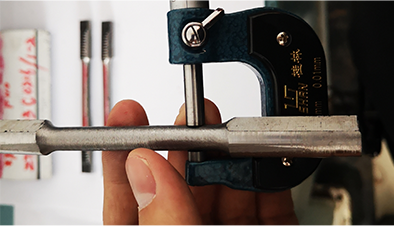- Afrikaans
- Albanian
- Amharic
- Arabic
- Armenian
- Azerbaijani
- Basque
- Belarusian
- Bengali
- Bosnian
- Bulgarian
- Catalan
- Cebuano
- Corsican
- Croatian
- Czech
- Danish
- Dutch
- English
- Esperanto
- Estonian
- Finnish
- French
- Frisian
- Galician
- Georgian
- German
- Greek
- Gujarati
- Haitian Creole
- hausa
- hawaiian
- Hebrew
- Hindi
- Miao
- Hungarian
- Icelandic
- igbo
- Indonesian
- irish
- Italian
- Japanese
- Javanese
- Kannada
- kazakh
- Khmer
- Rwandese
- Korean
- Kurdish
- Kyrgyz
- Lao
- Latin
- Latvian
- Lithuanian
- Luxembourgish
- Macedonian
- Malgashi
- Malay
- Malayalam
- Maltese
- Maori
- Marathi
- Mongolian
- Myanmar
- Nepali
- Norwegian
- Norwegian
- Occitan
- Pashto
- Persian
- Polish
- Portuguese
- Punjabi
- Romanian
- Russian
- Samoan
- Scottish Gaelic
- Serbian
- Sesotho
- Shona
- Sindhi
- Sinhala
- Slovak
- Slovenian
- Somali
- Spanish
- Sundanese
- Swahili
- Swedish
- Tagalog
- Tajik
- Tamil
- Tatar
- Telugu
- Thai
- Turkish
- Turkmen
- Ukrainian
- Urdu
- Uighur
- Uzbek
- Vietnamese
- Welsh
- Bantu
- Yiddish
- Yoruba
- Zulu
Irrigation Pipe Connection Solutions for Enhanced Water Management and Efficiency
Understanding Irrigation Pipe Couplings A Comprehensive Guide
Irrigation plays a pivotal role in agriculture, ensuring crops receive the necessary water to thrive, especially in areas where rainfall is scarce. One essential component of any irrigation system is the piping infrastructure, which often requires various fittings and connections to function effectively. Among these components, pipe couplings are crucial for maintaining the integrity and functionality of irrigation systems. This article aims to delve into the importance, types, installation, and maintenance of irrigation pipe couplings.
The Importance of Pipe Couplings in Irrigation
Pipe couplings serve as connectors that join two sections of pipe, allowing for the seamless delivery of water throughout a farm or garden. They are critical in situations where pipes might need to be extended, repaired, or replaced. Proper coupling ensures that there are no leaks in the system, which can lead to water wastage and increased costs. Moreover, a well-designed coupling system allows for easier access to pipelines for maintenance and upgrades, which is essential for the longevity and efficiency of the irrigation system.
Types of Irrigation Pipe Couplings
There are several types of couplings available, each designed for specific applications within irrigation systems
1. Straight Couplings These are the most basic type, used to connect two pieces of pipe of the same diameter. They are commonly employed in simple irrigation setups.
2. Reducing Couplings These couplings reduce the diameter of the pipe, making them ideal for transitioning between different pipe sizes when you need to connect pipes of varying dimensions.
3. Elbow Couplings Designed to change the direction of the piping, elbow couplings come in various angles (45º, 90º, etc.). They are essential for navigating around obstacles or when laying out an irrigation system with a specific design.
4. Tee Couplings These connect three pipes at a point, allowing for a branch in the irrigation system. Tee couplings are particularly useful when splitting water flow to different areas.
5. Compression Couplings These are versatile fittings that can connect two pipe ends without welding or special tools. They are especially useful in repairs and temporary setups.
irrigation pipe coupling

Installation of Irrigation Pipe Couplings
Installing pipe couplings is a straightforward process, but it requires attention to detail to ensure a watertight connection
. Here are the general steps to follow1. Cut the Pipe Use a pipe cutter to achieve a clean, straight cut on both ends of the pipe that will be joined.
2. Prepare the Coupling Ensure that the inside of the coupling is clean and free from debris. For certain types of materials, it might be necessary to apply a sealant or lubricant.
3. Join the Pipes Insert the ends of the pipes into the coupling. For compression couplings, tighten the securing mechanism according to the manufacturer's instructions.
4. Check for Leaks Once the system is pressurized, check for any leaks around the coupling joint. If leaks are detected, dismantle the joint and repeat the installation process.
Maintenance of Irrigation Pipe Couplings
Regular maintenance of irrigation pipe couplings is essential to ensure their long-term performance. Routine inspections should be carried out, particularly after heavy rains or extreme weather conditions. Look for signs of rust, corrosion, or degradation in material, particularly in plastic or metal couplings.
Additionally, winterization is crucial in colder climates to prevent pipe expansion and contraction, which can compromise couplings. Use insulation or drain the system before freezing temperatures set in.
Conclusion
Irrigation pipe couplings are a vital part of any irrigation system, contributing to its overall efficiency and reliability. Understanding the different types, installation techniques, and maintenance practices can significantly enhance the performance of an irrigation setup. By investing time and resources in proper coupling use, farmers and gardeners can ensure that their water management systems operate effectively, leading to healthier crops and sustainable agricultural practices.
-
Tubing Pup Joints: Essential Components for Oil and Gas OperationsNewsJul.10,2025
-
Pup Joints: Essential Components for Reliable Drilling OperationsNewsJul.10,2025
-
Pipe Couplings: Connecting Your World EfficientlyNewsJul.10,2025
-
Mastering Oilfield Operations with Quality Tubing and CasingNewsJul.10,2025
-
High-Quality Casing Couplings for Every NeedNewsJul.10,2025
-
Boost Your Drilling Efficiency with Premium Crossover Tools & Seating NipplesNewsJul.10,2025







